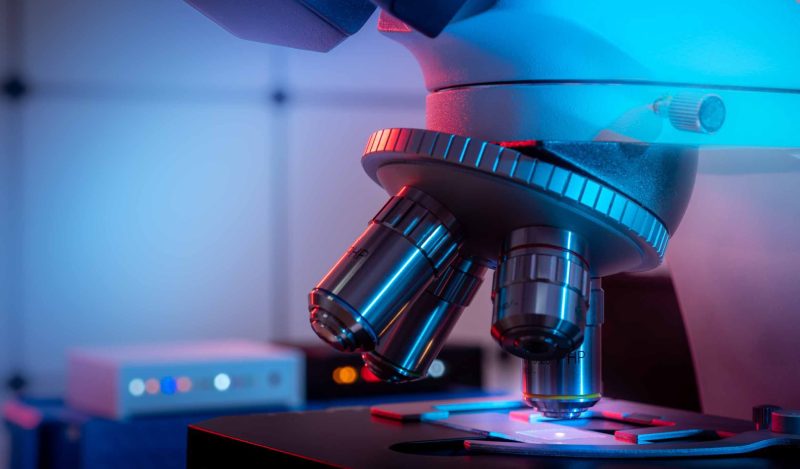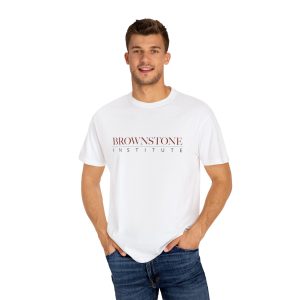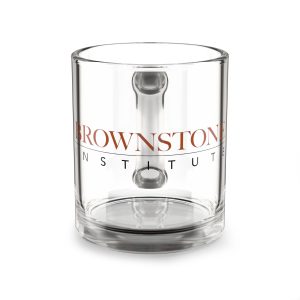Despite over 13.5 billion Covid-19 doses administered worldwide, there remains a lot of fundamental information lacking. Since there isn’t a good article which 1) scientifically, 2) clinically and 3) regulatorily address Lipid Nanoparticles (LNPs) and the FDA’s role in assuring and regulating novel technologies and ingredients, I am writing one.
Covid shots are new, complex, cutting-edge biotechnology in several ways but there could be a lot more to them than people realize. Although ubiquitously labeled “vaccines,” it should be noted that the definition of “vaccine” had to be substantively altered, (and more than once) to accommodate the inclusion of mRNA injections. Prior to the definition change of vaccines, Covid-19 mRNA injections would have fallen under the definition of gene therapy by the FDA as recently as 7/25/2018.
These mRNA shots differ completely from all other previously available “vaccine” products, not only because of their mRNA component, but also because of LNP components. LNPs are the engineered additive used to attach and deliver mRNA genetic coding for Covid-19 spike into the cells of a patient for the purpose of making mRNA stable and permit cellular absorption and transcription. Without LNPs, any RNA product would rapidly degrade. Having worked with RNA in the laboratory, I can also personally attest to RNA’s extreme fragility.
What was Different About This Authorization / Approval?
New vaccine development has historically involved a meticulous, slow, decade-long discovery, testing, review, and approval process. In contrast to that, those established epidemiological and time-honored standards seemingly evaporated under the justification of a Public Health Emergency (PHE). That scuttling was not for a “classic” type vaccine – but instead for brand-new, mRNA “vaccines” and their LNP components.
Next, the entire expedited approval/review process was condensed to less than one year. The former head of infectious diseases at one manufacturer described the LNP development process as “It is kind of like a small-molecule drug discovery engine, but on steroids.” A statement like that describing a rush to make a complex product available does not instill confidence.
In the end, important globally harmonized and previously established sacrosanct investigational medicine standards, carefully developed over half a century must have been dismissed when it came to the FDA’s Emergency Use Authorization (EUA) for proceeding with mRNA-based therapy administration.
An Erstwhile FDA Medical Reviewer and Yale University Pharmacology Professor has Unanswered Questions About mRNA LNPs
There are many unanswered questions about Covid-19 injections. Preliminary questions have even arisen about possible inconsistencies of the mRNA sequence itself. Other researchers have concerns on toxic effects of mRNA-injection produced spike proteins as a possible cause for adverse events. However, the LNP injection component has thus far received much less focus.
In addition to often discussed spike proteins, there is a published history describing LNPs by themselves as having independent toxicity and studies showing that nanoparticles have the potential to independently activate the complement (inflammatory) system. Relatedly, many of the FDA VAERS-reported adverse events such as myocarditis and pericarditis are inherently inflammatory conditions.
With these concepts in mind, the following specific questions are brought forth here:
- Because novel nano-biotechnology is being used, and has been shown in studies to have independent clinical effects, should the LNPs combined with mRNA have been reviewed or received scrutiny as an FDA combination product? If those discussions took place, what data led to the final decision?
- Are LNP configurations contained in mRNA shots considered inactive components of mRNA shots? What discrete studies were conducted with the LNP component alone to establish them as inactive components?
- Are LNPs an un-regulated biotechnology? There appears to be a “regulatory void” in FDA guidance when it comes to LNPs, excluding them from guidance oversight and specific FDA safety testing recommendations. Official “FDA Guidance Documents” on both Liposomes -and- Nanotechnology exclude any mention of LNPs.
- Should LNPs as a novel mRNA nanotechnology additive have had more vigilant scrutiny by regulators in general?
- Who (manufacturers? regulators?) is assuring the quality and consistency of mRNA shots (both the nucleotide sequence and LNP consistency) and why are those quality and consistency data not accessible by the public? Is it even possible for LNPs and their ligand attachments to be produced consistently on a large and “warp speed” basis? Where is the analytical proof of consistency?
- Were LNPs used in mRNA shots determined to be clinically safe? Were stand-alone safety tests conducted on LNPs without mRNA sequences? If not, why not? If yes, what are the results?
- Why isn’t there more ingredient specificity in package inserts about quantity and LNP configurations when other package inserts openly detail specific ingredient information and provide structures?
- Are potential variabilities in LNPs configurations responsible for the inconsistent adverse events reported in VAERS or V-safe databases? Is it related to variabilities in precursor/raw ingredients, manufacturing, or storage?
- How were LNP’s and other nanoparticles’ past history of toxicity reconciled by manufacturers and regulators prior to regulatory authorization/approval?
- Do LNPs have special human tissue- or cell-targeting abilities via ionic charge, substrate attachments or other mechanisms?
- Which pharmacokinetic Absorption, Distribution Metabolism, and Excretion (ADME) or radiolabeling/tracing studies have been conducted on LNPs in humans to detect potential clinical accumulation in tissues/organs? Do LNPs accumulate in cardiac tissues (due to a high amount of electrical activity there) leading to myocarditis, pericarditis, et cetera?
Now, I’ll attempt to address these questions more specifically and explain my general understanding of what could be scientific/clinical/regulatory/manufacturing shortcomings.
Definitions and Basics
LNPs are a type of nanotechnology. Nanotechnology generally refers to the branch of science and engineering devoted to designing, producing, and using structures, devices, and systems, by manipulating atoms and molecules at nanoscale. Nanoscale means having dimensions of the order of 100 nanometers (100 millionth of a millimeter) or less. In other words super tiny technology and able to permeate everywhere in the body.
Many applications of nanotechnology (including LNPs) involve new materials that have discrete properties or effects as compared to those of larger sizes. For example, papers published over a decade ago have shown how nanoparticle contaminations containing either copper or zinc are highly toxic unlike non-nanoparticle formulations of copper or zinc, such as those forms found in many multivitamins.
Thus, injected nanomaterials (such as LNPs) could have unique clinical/safety implications. Nanotechnology, including LNPs, should not necessarily be considered just “tinier” versions of existing or naturally occurring lipids, with the same functionality as their larger counterparts; they have the potential to have discrete functionality, toxicities and effects.
Do LNPs + mRNA = FDA Combination Product?
Does the combination of engineered lipid nanotechnology particles plus novel mRNA technology qualify it as a combination product? If not, why not? Combination Products are specially regulated and defined by the FDA as “Therapeutic and diagnostic products that combine drugs, devices, and/or biological products.”
Could LNPs be considered biologically active via cell-targeting or other mechanisms related to the design/engineering of LNPs such as charge or ligand substrates (non-lipid attachments to the LNP)? Were the specific LNPs employed for mRNA injections ever separately evaluated by developers for clinical or safety effects based on literature reports detailing toxicities, dating back to decades? What about those LNPs with ligand substrates?
When was Standalone Safety/Toxicity/Pharmacology/Pharmacokinetics of Covid LNPs Examined?
Due to a lack of regulatory and manufacturer transparency, we don’t know if LNP-specific characterization (size, structure, charge, quality, consistency) was a required condition of mRNA injection design or approval. LNP Absorption, Distribution Metabolism, and Excretion (ADME) doesn’t appear to have been established (or if established, not publicly shared). We also do not have a complete characterization of what happens to these specific LNPs following injection; if there is accumulation in tissues, cells, or organs due to lack of pathology, animal modeling, tracing, or radiolabeling studies.
Americans also don’t have transparency on whether or not regulators or manufacturers conducted any “stand-alone” LNP clinical safety, stability, or toxicology studies prior to widespread implementation and mandates – or if it has – that information is not being publicly disclosed.
Prior to their release under EUA, regulators seemingly neglected to examine the potential safety issues of LNPs themselves, instead implying them to be an inactive “vehicle” or simple lipid “just along for the ride” for mRNA delivery. LNPs aren’t specified to be an active or inactive ingredient on package labeling.
However, data has shown that LNPs, depending on their size and other factors, are not necessarily inert ingredients. Purification, charge, substrate attachments, and size-based separation of nanoparticles varying by vial or lot are some of the things that may potentially affect LNP clinical or non-clinical activity.
There is a clear lack of conclusive data regarding the safety or specificity of LNPs in vivo and what ramifications could occur with their widespread use in humans due to the lack of independent testing (or if data exists, I can’t find it). What little data that exists in the literature appears to be derived via non-clinical (ie animal) studies, but animal studies are very often not translatable to humans. The study of these engineered, positively charged lipids are in their own right a sub-specialized, sub-category of pharmaceutical/chemistry/engineering technology. However, it is unknown exactly who made final recommendations for LNP use, and what specific personnel/experts on LNPs exist within the FDA.
LNP Variability Factors and Potential FDA Quality/Consistency Issues
When it comes to assessing clinical safety, product consistency is critically important. Even small differences in the carbon structures of medications that are normally therapeutic can alter a therapeutic medication into a dangerous poison.
This is a problem, because with LNPs, and unlike with small-molecule pharmaceutical manufacturing, it has been acknowledged that there are few options to control the spontaneous LNP manufacturing “self-assembly” process, which could lead to minor or major product inconsistencies in the particle itself or its pegylated ligand attachments.
On top of that, a potentially already non-specific LNP mixture may begin as a range of sizes and may change over time for various reasons, including but not limited to: storage time, storage conditions, manufacturing technique, sourced raw materials, freezer, or room temperature variabilities. Even product agitation that occurs during transportation or altitude has been shown to potentially affect a molecule’s stability. LNPs are already known to have a disreputable history, particularly when it comes to stability and manufacturing.
On top of existing issues with manufacturing and stability, due to their complexity and nucleotide length, lengthy mRNA strands twist, wind, and bend into complex configurations, and could alter the properties of LNPs following mRNA attachment in ways that are hard to predict, thereby leading to even more potential for alteration of the LNP and potential subsequent inconsistency, potentially leading to toxicity.
Provisions to control storage factors during highly-regimented clinical trials – where every aspect is strictly coordinated via an FDA-approved clinical protocol – is one thing; the unavoidable variation in storage/handling/administration/mass production/”warp speed” production in the real world, is another.
This is especially the case because very few companies supply these complex LNP components; they are newcomers to this type of manufacturing and mRNA manufacturers admitted that they “struggle[d]” to respond to demands and that LNP suppliers were “scrambling” to keep up with a manufacturing process that takes “months.” Statements like this are illustrative of the complexity of these molecules.
One lipid producer stated that it suddenly ramped up its production by 50 fold. LNP manufacturers stated that efforts to meet the LNP needs were “unprecedented.”
Were all of those newly minted employees hired to ramp up production trained properly? How could they find LNP experts so quickly? What was their educational background? Obviously, when newcomers to LNP production are being rushed to radically increase volume, quality and consistency are a few of the things that Americans rely on FDA to provide oversight as well as a “double check.” That double check is performed by FDA using a term-of-art instrumentational technique referred to as pharmaceutical “release testing.” In fact, the FDA has a whole Office/Director responsible just for that.
Unfortunately, we don’t know about release testing results for consistency issues, and here’s why: The variation by lot in manufacturing is just one of the many things that should be monitored and shared with the American public by the FDA’s Office of Pharmaceutical Quality (OPQ) and its 1,300+ employees. While the OPQ could very well be evaluating and assuring all of that and more, there is zero transparency on any analytical variation findings with FDA’s OCP and the American public. Did the FDA perform live inspections on these ”struggling” and “scrambling” and rapidly expanding manufacturing facilities?
LNPs and Cell/Tissue/Organ-Specific Targeting and Toxicity
As biochemist Pieter Cullis explains, unless LNPs were positively charged, they might not attach to negatively charged phosphates on mRNA strands. And without LNP attachments, mRNA would be quickly torn apart in the body.
Naturally occurring lipids are usually neutral, and positively charged lipids don’t exist in nature. Positively charged lipids have been found to be potently cytotoxic by several global indicators. Still, LNPs combined with mRNA are synthetically engineered to be positively charged.
With external and intercalated LNP attachments, mRNA could potentially target negatively charged human cells, separate from any other LNP-substrate-targeting abilities which might exist. Could that ionic attraction lead to aggregation of LNPs to endothelial cells (which are negatively charged), be responsible for LNP tissue accumulation or potential occlusive/thrombotic stroke or heart attacks associated with these injections? (Of note, a monolayer of negatively-charged endothelial cells are what line the inside of all of one’s vasculature, appearing like a cobblestone road under a microscope.)
Could positively charged LNPs be attracted to negatively charged tissues/cells in the body? Could that lead to LNPs forming in one’s vasculature leading to occlusive stroke (also prominently reported in VAERS and V-safe)?
Unfortunately, there is abundance of data showing positively charged lipids to be inherently toxic. One area in the human body with a lot of electrical activity is the heart, and many adverse events reported to VAERS and V-safe (myocarditis, pericarditis, heart attack, arrhythmia, stroke) are heart-originated. Could positively charged LNPs electrically attaching themselves to cardiac tissue be a source of reported adverse events?
Are LNPs an Unregulated or Misregulated Biotechnology?
There appears to be a “regulatory void” in FDA guidance when it comes to LNPs, excluding them from specific FDA safety guidance document recommendations. It appears that available official “FDA Guidance Documents” on both liposomes -and- nanotechnology exclude any mention of LNPs.
Firstly, the FDA’s guidance document recommendations on Liposome Drug Products considers liposomes to be “…vesicles composed of a bilayer and/or a concentric series of multiple bilayers” (emphases added). However, LNPs are known to only have a lipid monolayer, thereby seemingly excluding LNPs from that guidance.
Additionally, on the FDA’s Guidance for Industry: “Considering Whether an FDA-Regulated Product Involves the Application of Nanotechnology” does not mention “lipids” anywhere within its text. While lipids are a long-time and common component in multiple pharmacological preparations, bioengineered lipid nanoparticles are not the same thing and would be expected to have different clinical properties. That guidance is ostensibly not a “catch-all” to include LNPs, as the FDA has multiple specific guidance on nanotechnology, based on their specific type.
It should have been obvious to mRNA manufacturers that LNPs ought to have been subject to special attention and testing for safety prior to their widespread implementation, especially with their dubious safety history. Yet, it remains unknown which (if any) safety tests occurred before, during, or after “warp speed” deployment.
Private Lawsuit Filed for mRNA and LNP Transparency
A privately filed lawsuit demanding transparency had to be filed to compel the release of manufacturers’ application, including mRNA sequence(s) and LNP quantities and configurations. One manufacturer’s mRNA application is said to be ~1.2 million pages long. In response to consumer queries, regulators initially very dubiously proposed redacting and releasing only 500 pages per month which would have taken ~200 years.
That is more than a little ironic seeing as how the entire “warp speed” development and EUA process took less than one year.
The judge ordered the release of 55,000 redacted pages every 30 days, which will instead take “only” two years. While that may seem like a relative bargain – it actually isn’t. Any FDA medical officer/senior medical analyst (present author included) can tell you that the vast majority of an application is nothing but raw tabled numbers (including: individual lab values, blood pressure measurements, temperatures weights, et cetera) that requires little/no redaction since no names or other PHI or HIPAA information are included in unredacted FDA new product applications.
Additionally, since the judge’s order didn’t specify that any particular pages would be given priority or should be released sequentially, the most critical parts of the application, such as LNP safety, LNP configurations, mRNA LNP binding sites, the actual mRNA strands, or milligram/LNP quantity and sequence per 0.3mL injection could be the last pages to be released. That could further prolong the release of the most fundamental information needed by outside drug safety analysts, clinicians, and other scientists for modeling potential mechanisms for reported safety signals.
Rushing mRNA shots through the regulatory process has raised important questions about both their reported safety findings and FDA’s regulation of nanotechnology. It has also raised questions about mRNA manufacturers claiming basic ingredient information about their products to be “trade secrets” despite the taxpayer funding development and the injections themselves. For those of you who aren’t as familiar with FDA regulation as I am, I can tell you: This is atypical.
FDA-approved products — even legacy drugs such as amoxicillin — prominently detail all of their ingredients (including the full ingredient list, plus active ingredient quantity, plus specification of whether ingredients are either active or inactive components) of their product within their official product labeling. The current labeling additionally doesn’t specify active versus inactive ingredients, despite the fact that LNPs may not be clinically/toxicologically inert according to some studies.
Fully Taxpayer-Funded, but Basic LNP and mRNA Information Still Considered “Trade Secret”
There is no good reason why pharmacologists and other scientists do not have full disclosure on mRNA sequence, LNP configurations, and toxicity studies. Manufacturers have liability immunity under the Public Readiness and Emergency Preparedness Act (PREP Act). Taxpayers already paid tens of billions each to multiple manufacturers, yet those same taxpayers weren’t entitled to know everything about it, including an analysis of what was in it. Indeed, one manufacturer alone acquired an unprecedented $100 billion profit in just one year – $38 billion of which was directly from mRNA shots.
Are LNPs or mRNA Spike Proteins Responsible for Life-Threatening Inflammatory-Related Adverse Events?
Several studies have shown that spike proteins from either the mRNA shots or community acquired infection are toxic in a dose-dependent manner. Incorrectly manufactured or excessive doses of mRNA injections can turn one’s own cells into “bio-zombies” compulsively replicating just the reported toxic Covid spike protein at a potentially much higher rate than what would occur via a community-acquired Covid infection, if regulated by a healthy immune system.
While a healthy immune system will build antibodies and fight Covid viral particle replication, thereby attenuating replication, an mRNA injection (depending on the dose) has the potential to overproduce an excess of Covid spike proteins – and potentially at an unnaturally rapid rate relative to normal viral replication – depending on the number/load of mRNA strands in a vaccine injection. It is unknown how many LNP particles are in each dose according to the official FDA label.
Was Historical Toxicity of Lipid and Other Nanoparticles Predictive of Recently Reported Adverse Events in VAERS and V-Safe?
In addition to the independent toxicity of spike proteins from the mRNA component, there is a well-established history of safety concerns with LNPs dating back to the 1990s. Those safety and cellular toxicity concerns continue on to this very day. Numerous published studies describe how LNPs independently cause toxicity and are known to activate the complement (inflammatory) system causing immune responses, induce liver injuries, lung injuries, stimulating free radicals, and have potential fetal adverse events by easily passing the placental barrier due to their ultra-tiny size.
In 2018, patisiran (Onpattro®) became the first gene therapy-based drug and the first approved therapy delivered via LNPs. But that drug was given to a limited population for individuals with an extremely rare genetic disease called hereditary ATTR (hATTR) amyloidosis. ATTR is a multisystem, rapidly progressive, otherwise fatal illness that only affects around 50,000 people worldwide, caused by a misfolded endogenous protein. That gene therapy product was permitted for use in adults only (not children, plus not all adults are eligible) and is used to silence a specific gene – not transcribe a complex spike protein.
Those eligible who received patisiran (Onpattro®) had significant adverse events requiring pretreatment with multiple anti-inflammatory drugs to minimize reactions. Those inflammatory–based adverse reactions were specifically attributed to its nanoparticles. Adverse effects from Covid mRNA shots are also inherently inflammatory in nature. The difference is: patisiran (Onpattro®) is a short nucleotide chain – about 20 sequences long.
In contrast to that, Covid-19 mRNA sequences to transcribe the spike protein (allegedly, that is; official FDA package insert doesn’t say) span thousands of nucleotides in length, meaning that Covid mRNA injections would need substantially greater quantity of LNPs to achieve stability, exposing those patients to significantly greater numbers of LNPs.
Along with patisiran (Onpattro®) causing an inflammatory response, there are clinical peer-reviewed studies showing similar inflammatory-centric adverse events reported with Covid mRNA injections including: ischemic stroke, pericarditis and/or myocarditis, inline with what is being reported to the FDA’s VAERS and CDC’s V-Safe reporting systems.
Is it the spike protein responsible or is the LNP component? Is it a combination of both? Neither? Is it dose-related? Is it due to manufacturing inconsistencies of the LNP or mRNA? Storage? Handling? Alteration of the LNP upon attachment mRNA? Is it something else?
Generally speaking, mRNA injections have been reported to FDA’s VAERS as the primary adverse event suspect in >9,000 heart attacks, >17,000 cases of permanent disability and >5,000 cases of myocarditis and pericarditis reported in the US alone. The extrapolated worldwide incidence could be hundreds (or perhaps thousands) of times greater. Even worse: according to over a dozen published studies, (including a recent FDA-funded study out of Harvard) the adverse event numbers reported in FDA’s VAERS represent fewer than 1 percent of vaccine adverse events that may occur in actuality.
Summary
In sum, mRNA shots are complex and novel technology, and may have unrealized clinical, pharmacological, and toxicological effects. Jamming them through an abbreviated/expedited authorization/approval process that has been untransparent has raised lingering questions about LNP safety, consistency, and the FDA’s overall regulatory policy on nanotechnology.
LNP/mRNA injections have also led to a high numbers of patient-reported treatment-associated serious adverse events including hospitalizations, permanent disabilities, and deaths, as detailed in both VAERS, and the CDC’s previously shuttered V-safe reporting system (V-safe appears to be back up, but had been shut down for months). The abbreviated and rushed timeline used to approve a complex and novel mRNA/LNP product should have led to a substantially greater scientific introspection by America’s federal public health officials, well prior to authorizations and government mandates.
Neither manufacturers nor government agencies are saying much about the clinical findings of mRNA/LNP injections as related to database reporting other than affirming their safety and regurgitating some variation of correlation is not causation. Does that mean Americans are expected to ignore hundreds of thousands of Covid-19 injection adverse event reports? If yes, then what is the point of collecting them in the first place?
Still, if Americans have the temerity to ask questions about the “safe and effective” narrative, it seems to be treated as sacrilege by hospital administrators, major employers, government officials – even the U.S. military.
Was the entire truncated development, testing, review, authorization, and subsequent safety findings of mRNA/LNP injections a holy ritual beyond objective questioning or altruistic critique?
Many scientists and clinicians still have unanswered, fundamental questions. Unfortunately, they will simply have to wait another year (or more) for FDA’s compliance with the court’s disclosure order. Americans can only hope that when the court deadline finally arrives, regulators don’t absurdly over-redact it to the point of being comically incoherent, as they have done in the past (see sample redactions in immediately preceding link).
In the meantime, these legitimate regulatory, clinical, and regulatory safety questions have not led to a contemplative regulatory, scientific, or epidemiological pause in proceeding full speed ahead with Fall 2023 EUAs, and CDC’s recommendations of “everyone over 6 months and older” needing new, updated mRNA injections.
Join the conversation:


Published under a Creative Commons Attribution 4.0 International License
For reprints, please set the canonical link back to the original Brownstone Institute Article and Author.









